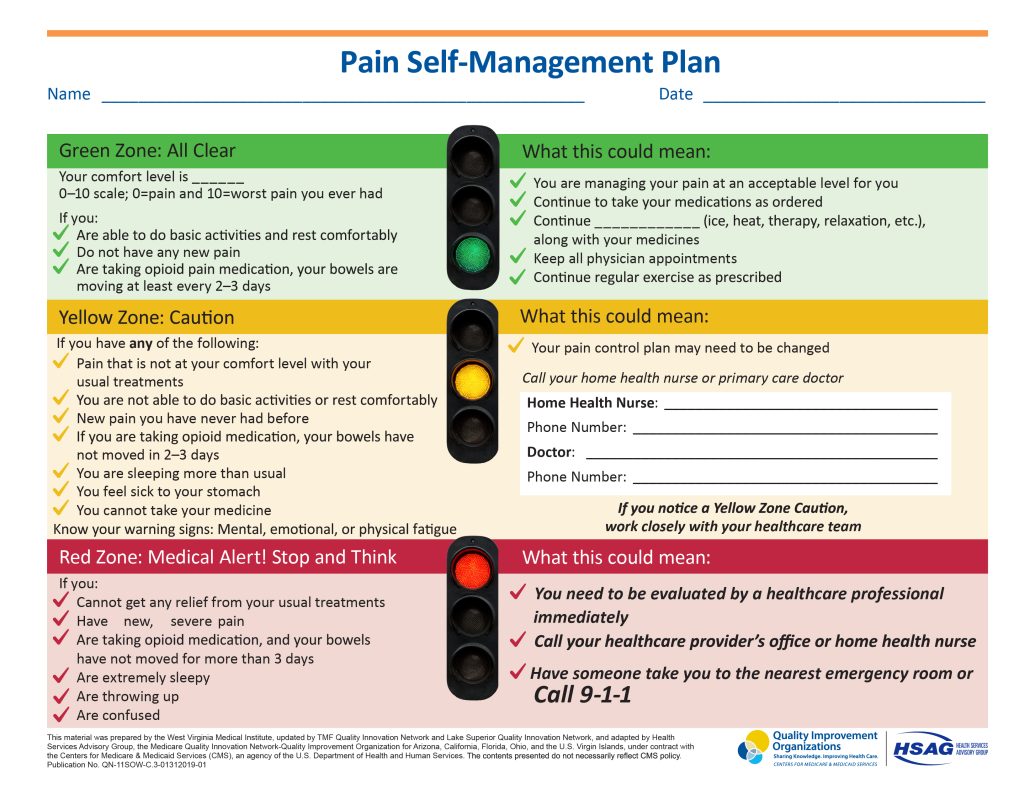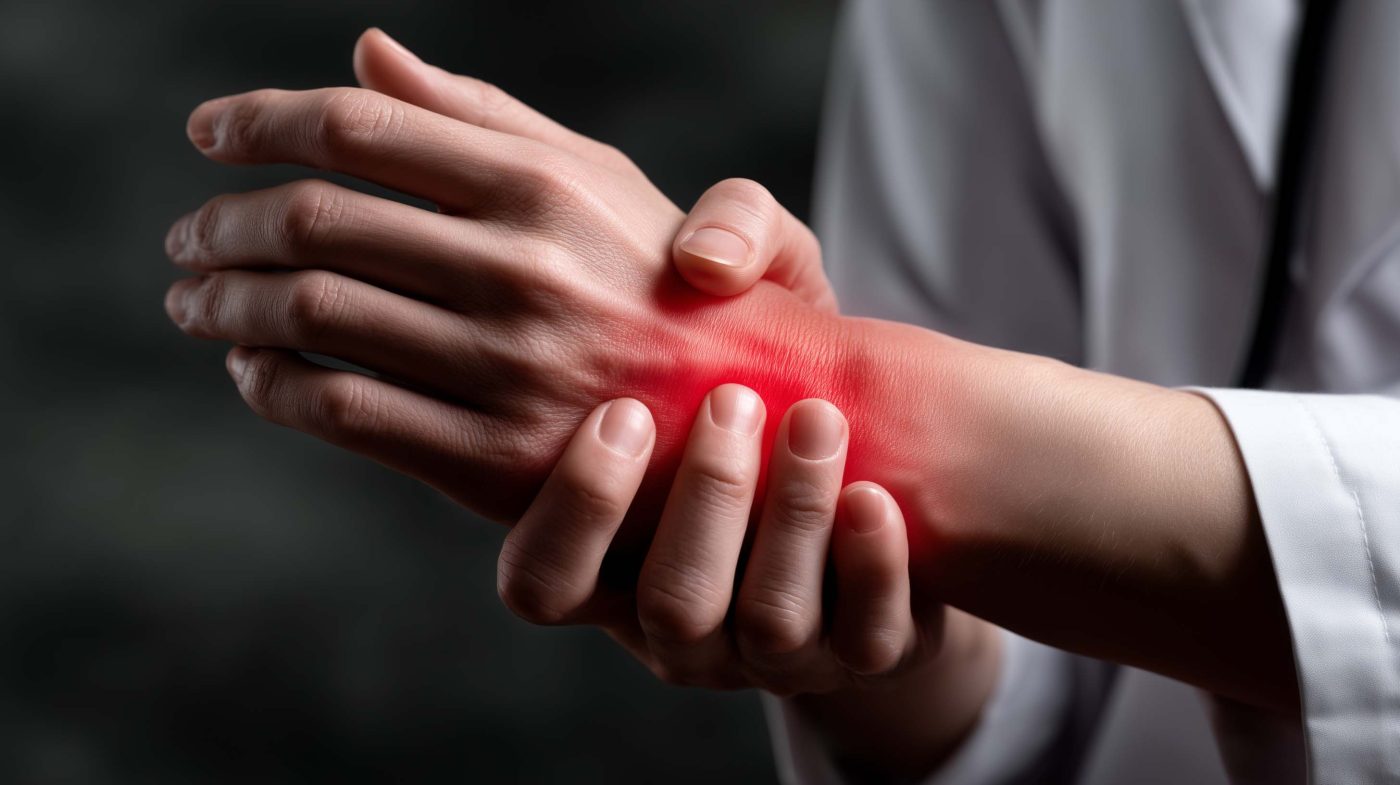Pain management isn’t just about medication — it’s about awareness. Knowing your “pain zones” helps you, your caregiver, and your care team respond quickly when something changes. This Pain Self-Management Plan uses a simple traffic-light system to show what’s normal, when to be cautious, and when to seek immediate help.
Keeping this chart visible — on your fridge, beside your medications, or in your care binder — helps everyone stay informed and act early to prevent complications.

🟢 Green Zone — All Clear
Your comfort level:
Rate your pain from 0–10 (0 = no pain, 10 = worst pain ever).
If you:
- Are able to do basic activities and rest comfortably
- Have no new pain
- If using opioid medication, your bowels move every 2–3 days
What this means:
✅ You’re managing your pain at a safe and acceptable level.
✅ Continue taking medications as prescribed.
✅ Use your pain-relief methods (ice, heat, therapy, relaxation, etc.).
✅ Keep all medical appointments and exercise as directed.
🟡 Yellow Zone — Caution
If you have any of the following:
- Pain that’s worse than your usual comfort level
- Trouble doing normal activities or resting
- New pain you’ve never had before
- No bowel movement in 2–3 days (if on opioids)
- Sleeping more than usual
- Feeling sick to your stomach
- Unable to take medications
What this means:
⚠️ Your pain control plan may need adjustment.
Call your home health nurse or primary care doctor for advice.
Keep this contact info handy:
- Home Health Nurse: ______________________ Phone: ______________
- Doctor: _________________________________ Phone: ______________
Caregiver tip: If pain worsens or new symptoms appear, act promptly. Don’t wait until the next visit.
🔴 Red Zone — Medical Alert: Stop and Think
If you:
- Get no relief from usual pain treatments
- Develop new, severe pain
- Have not moved your bowels for more than 3 days while on opioids
- Are extremely sleepy, throwing up, or confused
What this means:
🚨 This is an emergency.
- You need evaluation by a healthcare professional immediately.
- Call 9-1-1 or have someone take you to the nearest emergency room.
- Notify your healthcare provider once you’re safe.
Pain-Management Tips for Home
- Track your pain level (0–10) each day.
- Write down what helps or worsens your pain.
- Use non-drug therapies like stretching, breathing, or heat/cold packs.
- Talk with your provider before changing any medication or dosage.
- Keep caregivers informed about bowel movements, sleep, and mood changes.
Source
Adapted from materials prepared by the West Virginia Medical Institute, updated by TMF Quality Innovation Network and Lake Superior Quality Innovation Network, and adapted by Health Services Advisory Group (HSAG) under contract with the Centers for Medicare & Medicaid Services (CMS), U.S. Department of Health and Human Services.
Disclaimer
This information is intended for educational purposes only and should not replace professional medical advice or treatment. Always follow your healthcare provider’s directions.
- The HOPE Note: Transforming Primary Care with Integrative Health
- Essential Guide to LGBT Caregiving: Challenges, Steps & Resources
- Carrying on a Legacy of Love: The “Bread Run” with Sister Joyce and The Crew
- Stop the Bite: Bedbug Detection, Prevention, and Treatment
- Common Warning Signs of Mental Health: A Guide for Families and Caregivers


